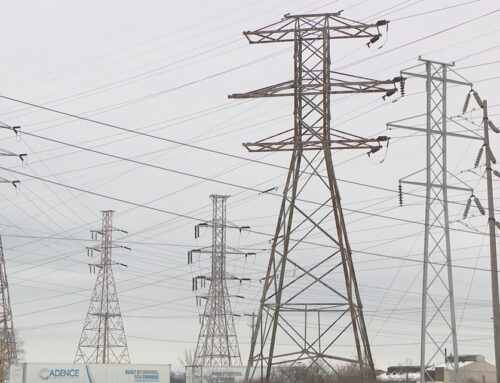U.S. Nuclear Power And AI Leadership: The Data Center Connection
December 29, 2024
The U.S. is lagging behind in the industrial race, losing ground to China in batteries, EVs, solar, wind, and critical minerals processing. Yet in artificial intelligence—perhaps the most transformative technology of our time—America still ranks number one globally. Maintaining this lead, however, hinges on a critical factor: powering the massive data centers that drive AI development.
While Europeans have pretty much admitted defeat with respect to innovations, as evidenced by the Draghi report and manifested in a recent industry exodus from the E.U. powerhouse, Germany, there’s still a lot of fight left on the other side of the Atlantic. The alliance between tech entrepreneurs and the energy industry could secure both economic prosperity and environmental sustainability—if executed strategically.
Maintaining the U.S. leadership position in AI requires clean firm power. This is where nuclear energy comes to play. In fact, 2024 marks a monumental shift for nuclear —the start of a long-awaited renaissance. Three developments stand out: the commitment of 14 major banks to finance nuclear projects, the tech sector’s initiative to reopen retired nuclear power plants, and the signing of the ADVANCE Act, which modified the Nuclear Regulatory Commission’s mission.
This renaissance comes at a critical time, as our electric grid faces unprecedented transformation with a sustained 3% growth through 2035. Beyond load growth, we are also decarbonizing and retiring old generating capacity. While data centers will drive the most dramatic expansion—growing from single digits to 22% of consumption—other sectors will also see significant increases, with transportation accounting for 46% of electricity use, buildings 16%, and industry 15%. Meeting this surging demand—particularly from energy-intensive data centers—requires power sources that can deliver both scale and reliability.
Nuclear power plants and new supercomputers are a perfect match. Operating Nvidia’s AI chips may demand as much as 1 GW of power – exactly what a typical AP1000 nuclear reactor provides. While data centers could theoretically run on solar and wind, intermittency poses a fundamental challenge. Ensuring sufficient renewable electricity would require overbuilding grid infrastructure by at least a factor of 4, perhaps higher, paired with utility-scale battery storage. During electricity shortfalls, residential customers – not data centers – would face potential blackouts. With 80% of global internet traffic flowing through servers in Northern Virginia, even brief disruptions would create billions in economic damage.
The obvious alternative—natural gas power plants—faces its own insurmountable barrier. Many tech companies have committed to sustainability goals, promising to match their loads both temporally and geographically – meaning they must use clean power at the exact time it is consumed and from the same region as their data centers. Running datacenters on natural gas long-term is not feasible due to the tech sectors’ climate commitments, since carbon capture and storage remains too costly.
Nuclear power emerges as the only scalable solution to meet these demands. Currently, the United States leads in installed nuclear capacity with 94 working reactors and nearly 100 GW of capacity. This needs to triple by 2050 to meet growing demand – hence the Department of Energy’s plan for 200 GW of new nuclear capacity. However, China is positioned to take the lead soon, as the U.S. has largely stopped building new plants. After 1996, only three new reactors were commissioned: Watts Bar 2 in TN (2015), Units 3 and 4 in Plant Vogtle in GA (2023-2024).
How can the U.S. deliver on its plans to build multiple nuclear plants per year until 2050? The nuclear industry has a saying: France has two kinds of nuclear reactors and a hundred kinds of cheese, while the U.S. has two kinds of cheese but about a hundred kinds of reactors. Building a string of first-of-a-kind nuclear reactors has eroded industrial expertise and inflated costs. While Georgia’s Vogtle plant unit 3 faced initial delays and cost overruns, the next reactor proved significantly more economical – demonstrating clear learning-by-doing benefits. But focusing just on construction costs misses the bigger picture. Recent research suggests that current LCOE calculations may be biasing policy decisions against nuclear power, as they do not account for systems costs, capacity factors, and reliability benefits. The real economic story becomes clear when examining fully depreciated nuclear plants, which can produce electricity at remarkably competitive rates around $31 per MWh.
Nuclear’s current high costs are not driven by any fundamental flaw in the technology. They are self-inflicted through excessive regulation. We have piled on extreme safety requirements based on the notion that any radiation is harmful, no matter how small the dose. But this defies common sense: if this were true, wouldn’t we see serious health impacts in populations living in areas with high natural background radiation? Yet we do not. These misguided policies have created artificial barriers to nuclear deployment just when we need it most.
The strategic imperative is clear: The U.S. must maintain its AI leadership, establish energy abundance through nuclear power, and protect the environment while growing the economy. We cannot spend our way into prosperity, but we can innovate our way forward. Nuclear power must be seen in a new light: as a versatile foundation for clean firm power generation, pink hydrogen production, and industrial heat—all while guaranteeing grid stability. While the Trump presidency might see natural gas as the key to our energy abundance, nuclear power can meet the bulk of new power demand.
Search
RECENT PRESS RELEASES
Related Post



